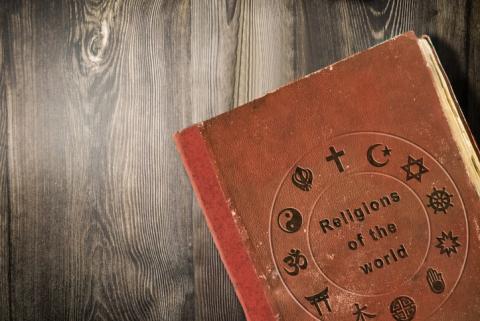Greek Mythology: Allusions
Which of the following best describes the story of Pandora's Box?
- Pandora was a mortal woman who was given a box by the gods as a punishment for Prometheus stealing fire from them. The box contained all the world's evils, and Pandora was instructed not to open it. However, her curiosity got the better of her!
Which of the following is true about Argus?
- Argus was a giant with one hundred eyes, of which only a few would sleep at a time. He was assigned by Hera, the queen of the gods, to guard a white heifer. Argus was eventually slain by Hermes, who was sent by Zeus to steal the heifer.
Which of the following best describes Proteus in Greek mythology?
- Proteus was a prophetic old sea god who could foretell the future, but who could only be captured if someone could hold onto him while he shape-shifted through all his possible forms.
What is the Gordian Knot?
- The Gordian Knot was a knot that was said to be impossible to untie. According to legend, whoever could untie the knot would be the ruler of all of Asia. Alexander the Great, not wanting to waste time untying it, simply cut the knot with his sword, fulfilling the prophecy and claiming his prize.
Who was Prometheus in Greek mythology?
- Prometheus was a titan who sided with Zeus in the war against the titans. He is known for creating humans out of clay and giving them the gift of fire, which he stole from the gods. Prometheus was then brutally punished for his actions by Zeus.
What is the significance of Achilles' heel in Greek mythology?
- Achilles was a great warrior who was invulnerable to harm except for his heel. His mother, Thetis, had dipped him in the River Styx to make him invincible, but she held him by his heel, leaving that one spot vulnerable.
Which of the following is true about the Bacchanalia?
- The Bacchanalia was a festival held in honor of the wine god Dionysus. It was celebrated with drinking, dancing, and other forms of revelry, and it was sometimes criticized by more conservative members of Greek and Roman society.
Who is Nemesis in Greek mythology?
- Nemesis was the goddess of revenge and balance, who ensured that people received what they deserveShe often punished those who showed arrogance or hubris, and she was also associated with the concept of retribution.
What was the final labor of Hercules?
- The final labor of Hercules was to capture Cerberus, the three-headed dog that guarded the entrance to the underworld. He accomplished this task with the help of the gods and brought the fierce creature to the surface for a time before returning it.
Who is Cupid in Greek mythology?
- Cupid, also known as Eros, is the god of love and desire in Greek mythology. He is often depicted as a winged boy with a bow and arrow, which he uses to pierce the hearts of his targets, causing them to fall in love.






